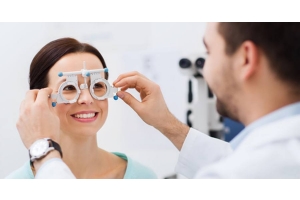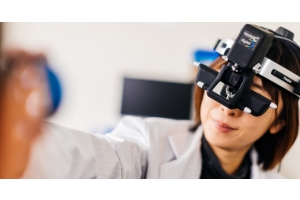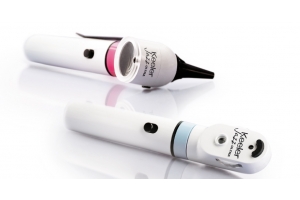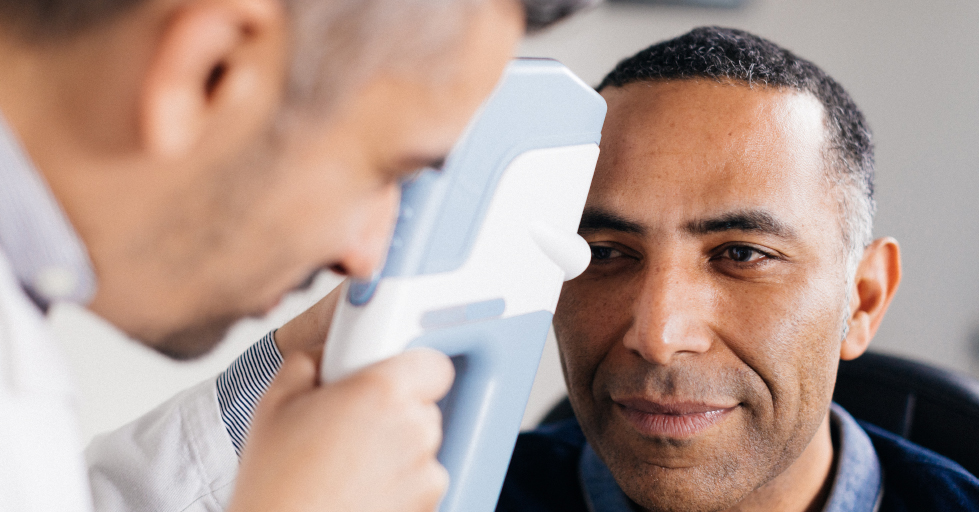
What is glaucoma?
Glaucoma is a common but treatable eye condition that can lead to blindness if left unchecked and untreated. It is caused by abnormally high eye pressure, also known as intraocular eye pressure (IOP).
While anyone can develop glaucoma, there are certain risk factors that can increase the likelihood of developing the disease.
In this article, we will take a closer look at the different types and causes of glaucoma, as well as the risk factors that can increase a patient's chances of developing the condition.
What are the types and causes of glaucoma?
Researchers still aren't sure about the exact cause of glaucoma, but it is believed to be caused by high amounts of fluid build-up inside the eye. Some researchers believe that an insufficient blood supply can lead to glaucoma.
There are several types of glaucoma, including:
- Primary open-angle glaucoma - This is the most common type of glaucoma and occurs gradually over time. It is painless and can go unnoticed for years, making it difficult to detect until vision loss occurs. The open angle is the part of the eye where the iris and cornea meet. If there is a blockage or some other problem deeper in the trabecular meshwork, which is located in the open angle, it can cause a build-up of pressure inside the eye, leading to nerve damage and vision loss.
- Acute angle closure glaucoma: This type of glaucoma is rarer than primary open-angle glaucoma and causes the IOP to spike suddenly. In most instances of acute angle closure glaucoma, the increase in IOP occurs in a matter of hours. It occurs when the fluid is unable to properly drain, causing the cornea and iris to move too closely together and block the angle, leading to an acute attack. During an acute attack the fluid is entirely blocked from flowing through the trabecular meshwork, causing the pressure build-up to push on the optic nerve and damage it. If left untreated, it can lead to blindness.
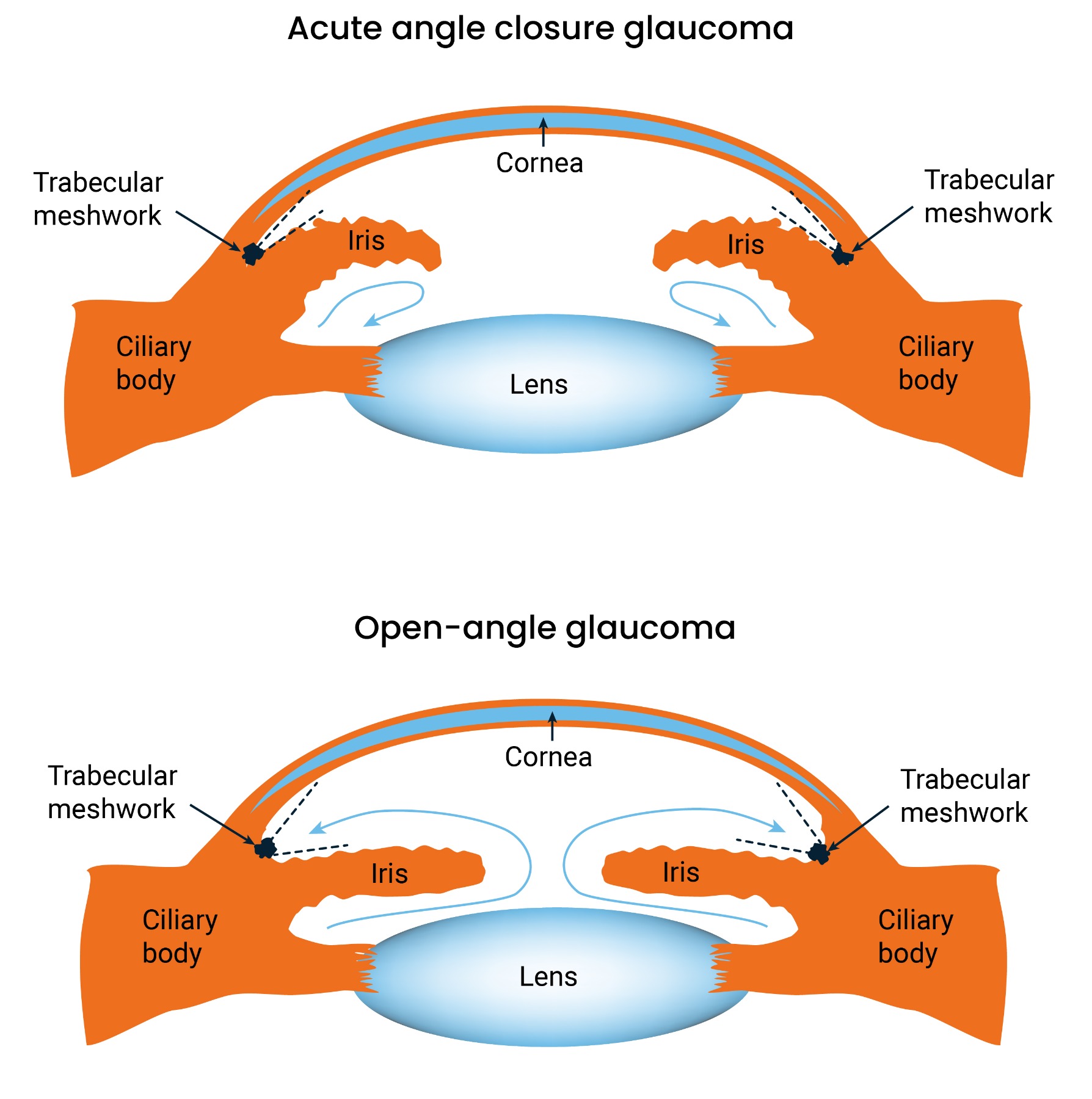
- Secondary glaucoma: This type of glaucoma occurs due to an external factor, such as an eye injury or surgery. Patients with eye abnormalities or other diseases may also eventually develop secondary glaucoma.
- Normal-tension or low-tension glaucoma: This type of glaucoma occurs when there is damage to the optic nerve, even though the fluid and pressure in the eye are at acceptable levels. Damage to the optic nerve can result from diseases, injuries, or poor health, particularly in the individual's arteries.
Glaucoma risk factors
Certain factors can increase a patient's likelihood of developing glaucoma, including:

Age
Individuals aged 60 and older are at a heightened risk of developing glaucoma, while African Americans have an increased risk at age 40. With age, the chance of drainage blockages or insufficient drainage increases, leading to increased IOP.

Race
African Americans are more likely to develop glaucoma than other races and are also more likely to be permanently blind because of it. The angle-closure type of glaucoma is more likely to affect people of Asian descent and Native Alaskans, while people of Japanese descent are most likely to be impacted by low-tension glaucoma.

Family history
Studies have shown that those who have a family history of glaucoma are more likely to develop glaucoma themselves.

Medical conditions
Patients with diabetes, high blood pressure, or heart disease may be more likely to develop glaucoma due to the interference of these medical conditions with blood flow.

Physical injuries
An injury to the eye can damage the optic nerve or trabecular meshwork, impeding fluid flow and leading to glaucoma.

Corticosteroid use
Extended use of corticosteroids like cortisone or prednisone may also lead to secondary glaucoma.
Symptoms and diagnosis
Sometimes there aren't any symptoms of glaucoma, and individuals may not realise they have it until they start to lose their vision. Other signs may include blurred vision, eye pain, or pressure inside the eye.
Regular eye examinations are essential for diagnosing glaucoma. During an eye exam, an eye care professional will check for continued deterioration of the optic nerve or drainage system. This is usually done with a tonometer that will test the IOP. Other health tests may also need to be performed to determine overall health.
The retina can be examined and X-rayed to determine its health and whether it's changed over time.
A gonioscopy test may also be performed to examine the trabecular meshwork and look for any damage or inefficiencies that may cause glaucoma.
Questions? Contact Keeler today!
Trust Keeler for all your eye care professional needs. Leveraging our extensive knowledge and century-long expertise in producing diagnostic ophthalmic equipment, we are resolute in our mission to put an end to preventable vision loss.
Our vast inventory includes ultrasonic and diagnostic equipment as well as a pharmaceutical and PPE supplies.
For more information or any questions you may have, please reach out to us at our toll-free number 1-800-523-5620 or send us an email at customerservice@keelerusa.com.
Explore our ophthalmic and optometry solutions, including:
- Binocular Indirect Ophthalmoscopes
- Biologics
- Bulbs & LEDs
- Clinical Equipment
- Cryo Systems
- Diagnostic Hand Instruments
- Electrolysis
- Operating Room Accessories
- Pachymeters
- Sight & Vision Testing
- Slit Lamps
- Surgical Loupes & Lights
- Tonometry
- Ultrasound
We regularly partner with a range of high-tech ophthalmic solution providers, general medical instrument manufacturers, veterinary diagnostic specialists, and other industry leaders to offer customised OEM manufacturing services.





